 |
 |
 |
| |
Effects on post-prandial lipids and arterial stiffness of atazanavir/ritonavir versus darunavir/ritonavir in HIV-uninfected adults
|
| |
| |
Reported by Jules Levin
14th International Workshop on Co-morbidities and Adverse Drug Reactions in HIV
July 19-21, 2012
Washington, D.C., USA
Frederick J Lee1, Winnie WY Tong1, Robyn Richardson1, Kate Sinn1, Nicola Mackenzie1 and Andrew Carr1
1 Clinical Research Program, St. Vincent's Centre for Applied Medical Research, Sydney, Australia

Effects on post-prandial lipids and arterial stiffness of ritonavir-boosted atazanavir versus ritonavirboosted darunavir in HIV-uninfected adults
FJ Lee1, WWY Tong1, R Richardson1, K Sinn1, N Mackenzie1, A Carr1
1Clinical Research Program, St Vincent's Centre for Applied Medical Research, Sydney, Australia
Objectives/aims: Only about 50% of the cardiovascular risk associated with protease inhibitor (PI)-based therapy
can be explained by PI-related fasting dyslipidaemia. Other PI effects on the vasculature may occur via means other than on circulating lipids; in vitro models suggest that PIs directly induce endothelial dysfunction, and may promote the conversion of macrophages to
atherogenic foam cells. Low-dose ritonavir alone causes in HIV-uninfected adults both a fasting and postprandial dyslipidaemia; the latter is also a predictor of cardiovascular disease. No study has evaluated postprandial lipids with PI-based combination antiretroviral
therapy (cART). We compared the effects of ritonavir-boosted atazanavir to ritonavir-boosted darunavir on post-prandial plasma lipids of HIV-uninfected adults. We also assessed arterial stiffness, which is associated with coronary artery disease and is an independent
predictor of cardiovascular mortality, safety, glycaemic parameters (glucose, insulin) and inflammatory markers (C-reactive protein, D-dimer).
Methods: Twenty HIV-uninfected, adult volunteers with body mass index 20-30 kg/m2, fasting triglycerides <2.0 mmol/l and total cholesterol <6.0 mmol/l were randomized 1:1 to open-label atazanavir/ritonavir (300/100 mg) once daily or darunavir/ritonavir (800/100
mg) once daily for 4 weeks. Individuals with diabetes mellitus, or receiving anti-hypertensive or statin therapy, were excluded. Participants consumed a standardized meal (energy content 5,795 kJ) at baseline and week 4, with blood samples collected at fasting, then hourly for 4 h post-meal. Arterial stiffness, assessed as the heart-rate corrected augmentation index (AIx-75), was measured by radial artery tonometry. The primary variables of interest were the between-group differences in the change in incremental area under the curve (DiAUC) at week 4 for post-prandial lipids (total/low-density lipoprotein [LDL]/high-density lipoprotein [HDL] cholesterol, triglycerides) and apolipoproteins A1 and B. One-way analysis of variance and Mann-Whitney U tests were used to compare between-group differences.
Results: Baseline characteristics of the 20 participants were 50% male, mean age 38 years, 30% smokers, 35% family history of cardiovascular disease, mean weight 72 kg and mean blood pressure 113/72 mmHg. Between group differences in DiAUC for post-prandial lipids did not reach statistical significance, but showed trends for a greater mean fall in DiAUC with atazanavir/ritonavir
versus darunavir/ritonavir for LDL cholesterol (-0.25±0.23 versus 0.15 ±0.28 mmolh/l, P=0.28, respectively), apolipoprotein A1 (-0.44 ±0.52 versus 0.27 ±0.28 mmolh/l, P=0.25, respectively), and apolipoprotein B (-0.32 ±0.26 versus 0.15 ±0.21 mmolh/l, P=0.17, respectively), with a trend for a lesser fall for HDL cholesterol (-0.11 ±0.18 versus -0.47 ±0.23 mmolh/l, P=0.24, respectively). Atazanavir/ritonavir induced a significantly greater mean post-prandial fall in ∼iAUC for AIx-75 than darunavir/ ritonavir (-27.60 ±11.63 versus 0.08 ±4.68 h%, P=0.04, respectively). No difference was observed for any other parameters between the study arms.
Conclusions/discussion: Post-prandial arterial stiffness was greater with darunavir/ritonavir than with atazanavir/ritonavir in HIV-uninfected adults, despite non-significant effects on post-prandial lipids. This result may partially explain the PI-induced impact
upon cardiovascular risk otherwise not explained by fasting dyslipidaemia.
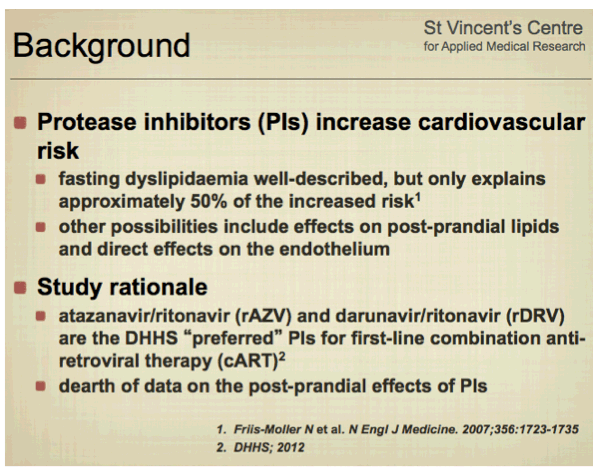
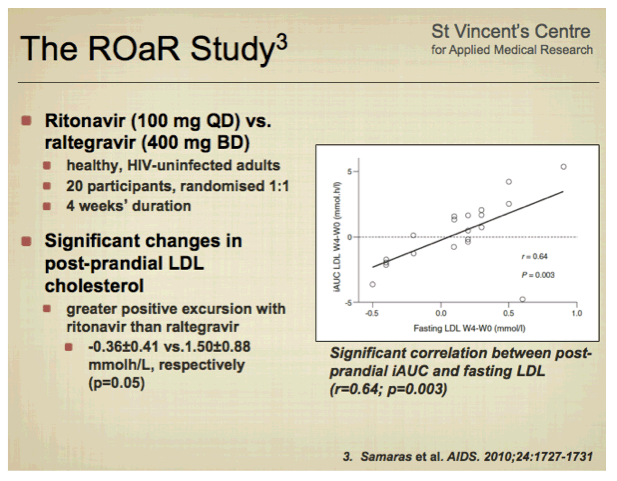
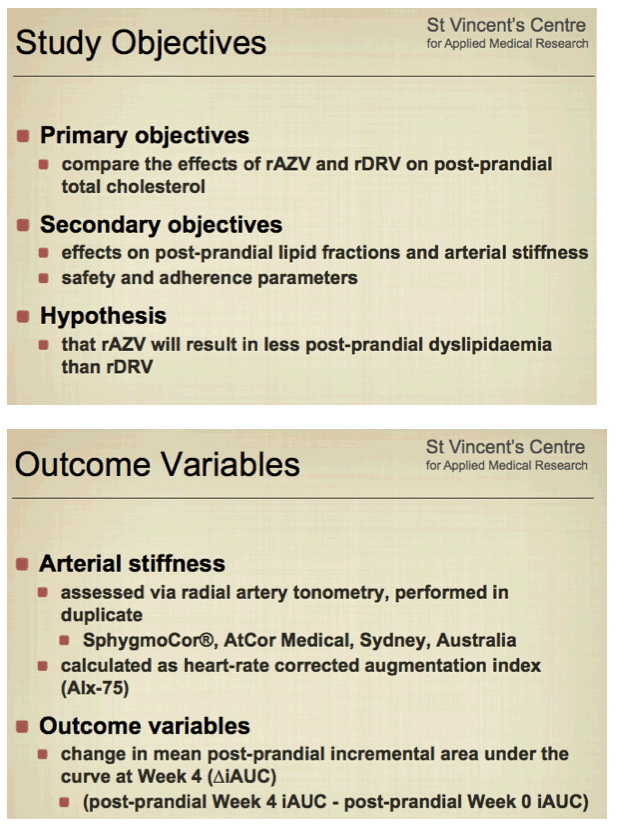
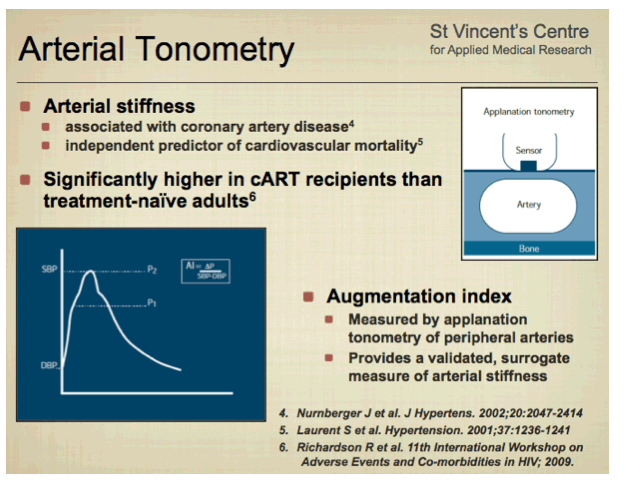
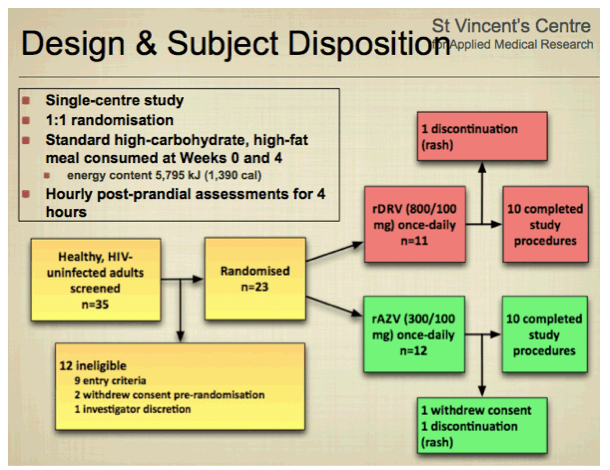
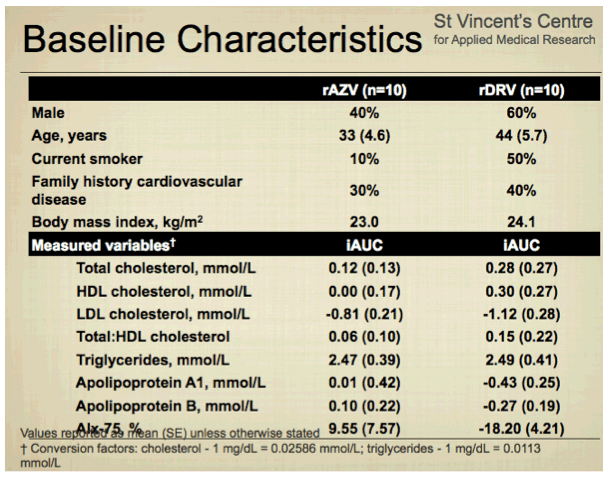

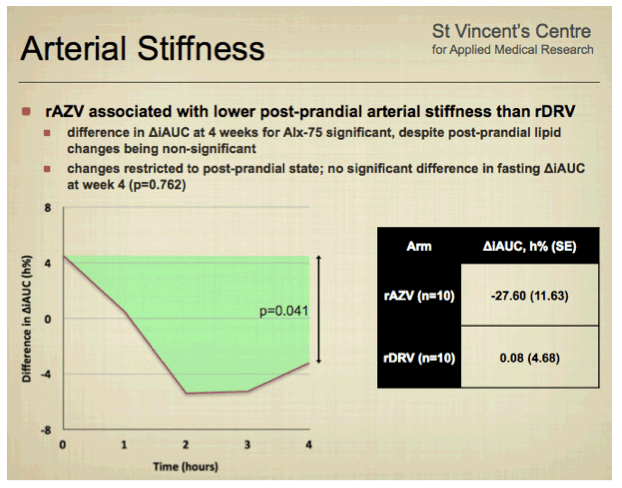
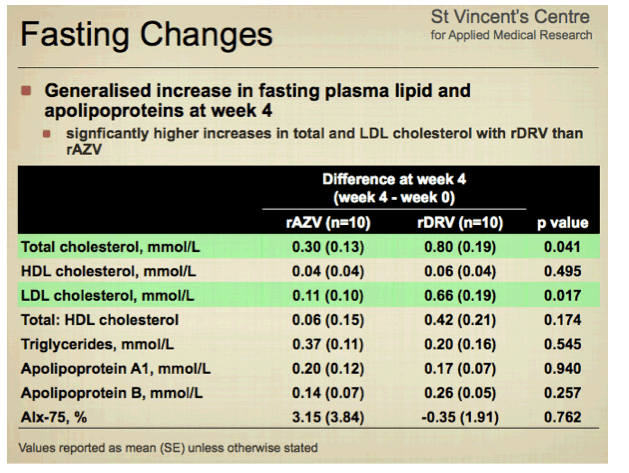
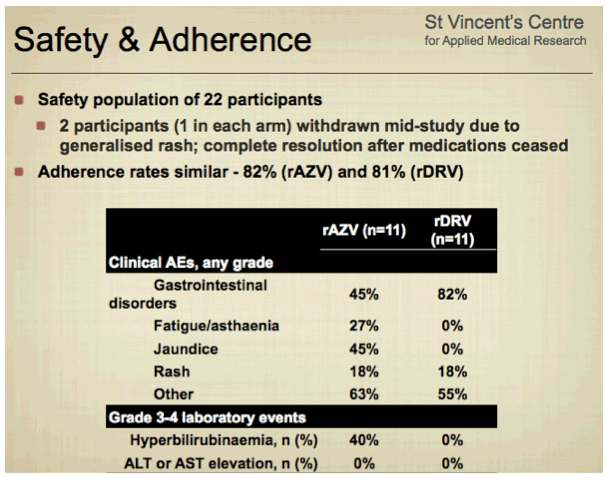
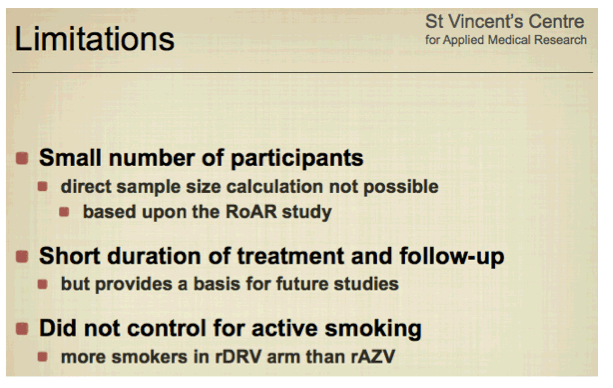
|
| |
|
 |
 |
|
|